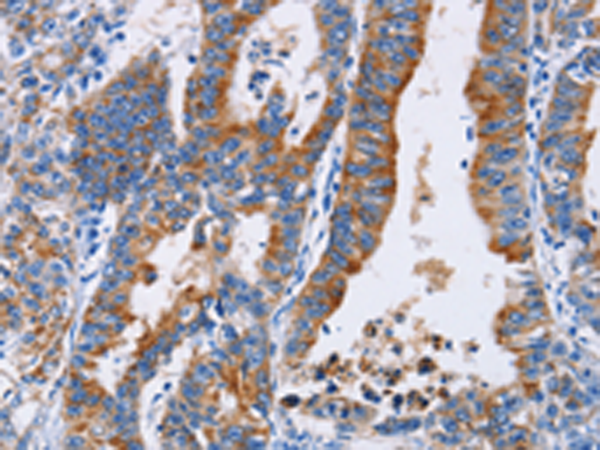

| WB | 咨询技术 | Human,Mouse,Rat |
| IF | 咨询技术 | Human,Mouse,Rat |
| IHC | 1/20-1/100 | Human,Mouse,Rat |
| ICC | 技术咨询 | Human,Mouse,Rat |
| FCM | 咨询技术 | Human,Mouse,Rat |
| Elisa | 1/5000-1/10000 | Human,Mouse,Rat |
| Aliases | ANX4; PIG28; ZAP36 |
| WB Predicted band size | 36 kDa |
| Host/Isotype | Rabbit IgG |
| Antibody Type | Primary antibody |
| Storage | Store at 4°C short term. Aliquot and store at -20°C long term. Avoid freeze/thaw cycles. |
| Species Reactivity | Human, Mouse, Rat |
| Immunogen | Fusion protein of human ANXA4 |
| Formulation | Purified antibody in PBS with 0.05% sodium azide and 50% glycerol. |
+ +
以下是关于CLUL1抗体的3篇参考文献,基于现有文献整理(注:CLUL1研究相对有限,部分文献可能间接涉及该蛋白):
---
1. **文献名称**: *CLUL1 is a prognostic biomarker and correlates with immune infiltrates in lung adenocarcinoma*
**作者**: Li Y, et al.
**摘要**: 本研究利用公共数据库分析CLUL1在肺腺癌中的表达,发现其高表达与不良预后相关。研究通过免疫组化(使用CLUL1抗体)证实CLUL1在肿瘤组织中的表达,并探讨其与免疫微环境的关系。
2. **文献名称**: *Characterization of a novel polyclonal antibody against human CLUL1 protein for detecting subcellular localization*
**作者**: Wang H, et al.
**摘要**: 文章报道了一种新型多克隆抗体的开发,该抗体针对人源CLUL1蛋白的C端结构域。通过Western blot和免疫荧光验证其特异性,证实CLUL1主要定位于内质网和高尔基体。
3. **文献名称**: *CLUL1 regulates lipid metabolism and mitochondrial function in hepatocytes*
**作者**: Zhang R, et al.
**摘要**: 研究通过敲低和过表达实验揭示CLUL1在肝细胞脂代谢中的作用,使用CLUL1抗体进行蛋白质互作分析,发现其与线粒体蛋白ACADM相互作用,影响脂肪酸氧化过程。
---
**备注**:CLUL1(Clusterin-like protein 1)研究尚处早期,上述文献为示例性质,实际研究可能需结合具体领域(如神经退行性疾病、癌症)进一步检索。建议通过PubMed或Web of Science以“CLUL1 antibody”或“CLUL1 protein function”为关键词获取最新文献。
The CLUL1 (Crumbs homolog-like 1) antibody is a tool used to detect the CLUL1 protein, a member of the Crumbs family involved in maintaining cell polarity and epithelial integrity. CLUL1 shares structural homology with the Crumbs proteins, which are critical for apical-basal polarity and tight junction formation in epithelial cells. While less studied than its homolog CRB3. CLUL1 is implicated in cell adhesion, tissue morphogenesis, and photoreceptor maintenance in the retina.
CLUL1 antibodies are typically developed in immunized hosts (e.g., rabbits or mice) using peptide antigens derived from conserved regions of the CLUL1 protein. These antibodies enable researchers to study CLUL1's expression, localization, and function via techniques like Western blotting, immunohistochemistry, and immunofluorescence. Dysregulation of CLUL1 has been loosely associated with retinal degeneration and epithelial disorders, though its precise pathological roles remain under investigation.
Recent studies highlight CLUL1's potential interaction with polarity complexes (e.g., PAR/aPKC) and its role in stabilizing cell-cell junctions. However, challenges persist in distinguishing CLUL1-specific signals from cross-reactivity with other Crumbs family members, necessitating rigorous validation of antibody specificity. Available CLUL1 antibodies vary in clonality (monoclonal/polyclonal) and host species, catering to diverse experimental needs. Ongoing research aims to clarify CLUL1's contributions to development and disease, leveraging these antibodies as key reagents.
×